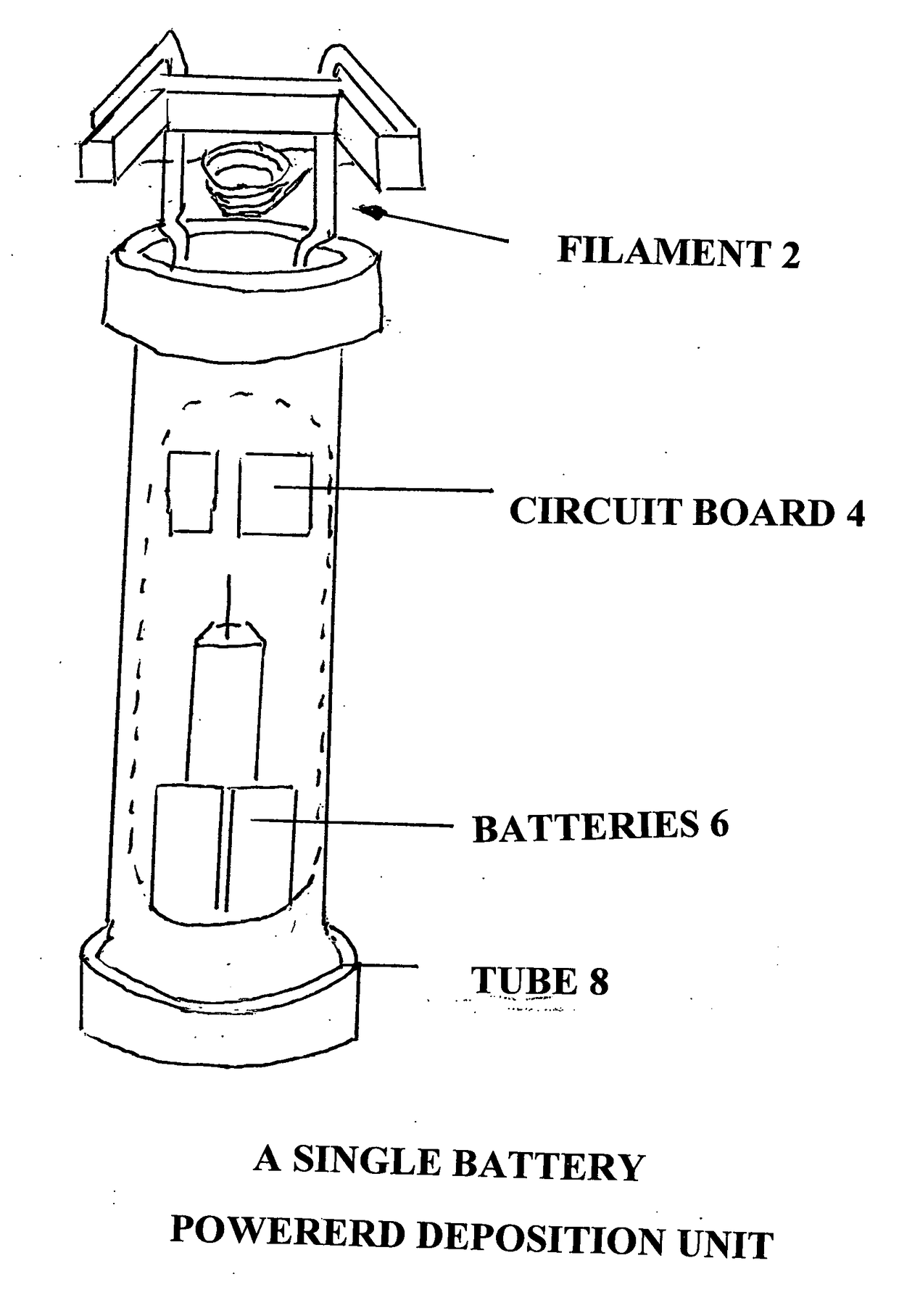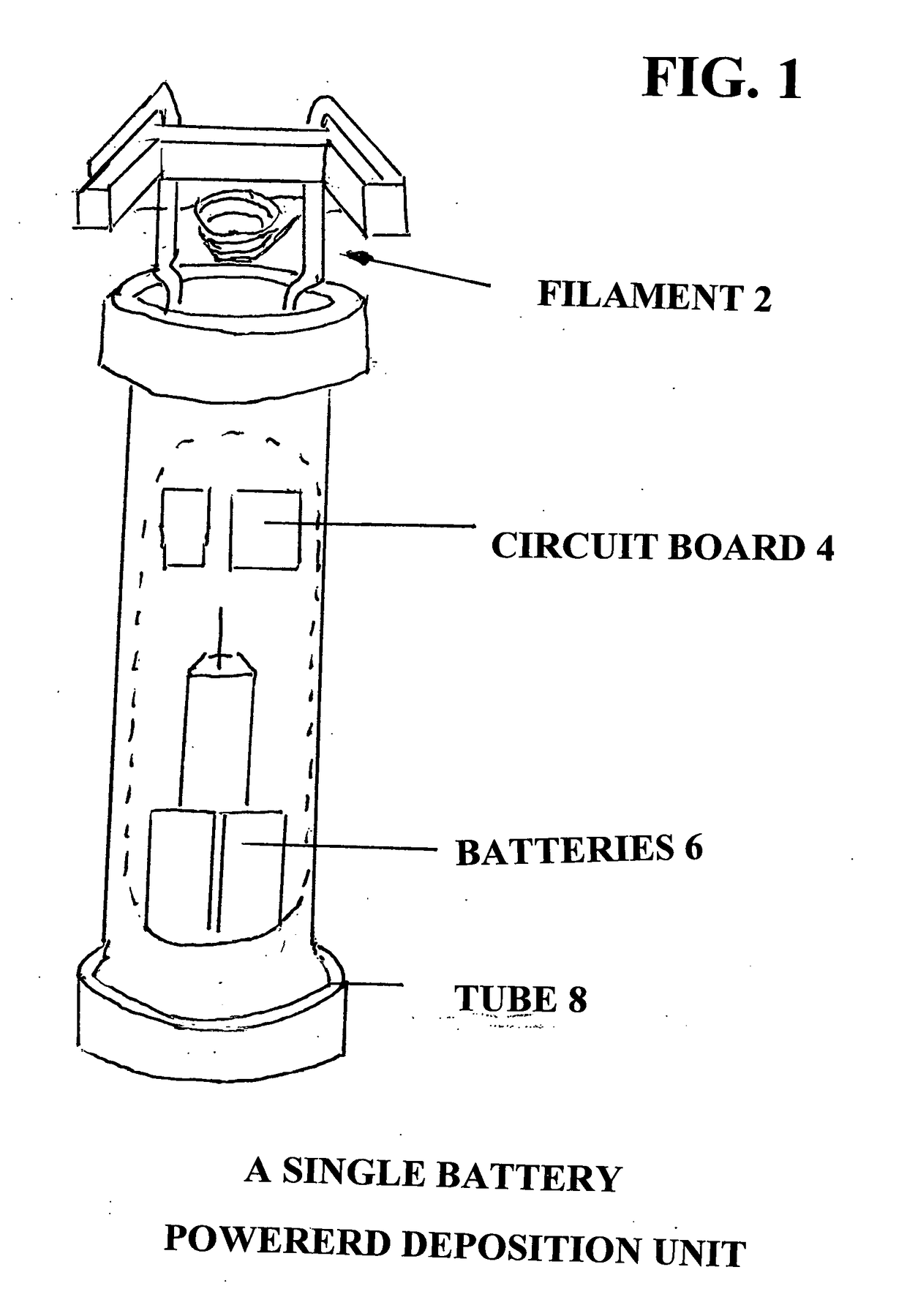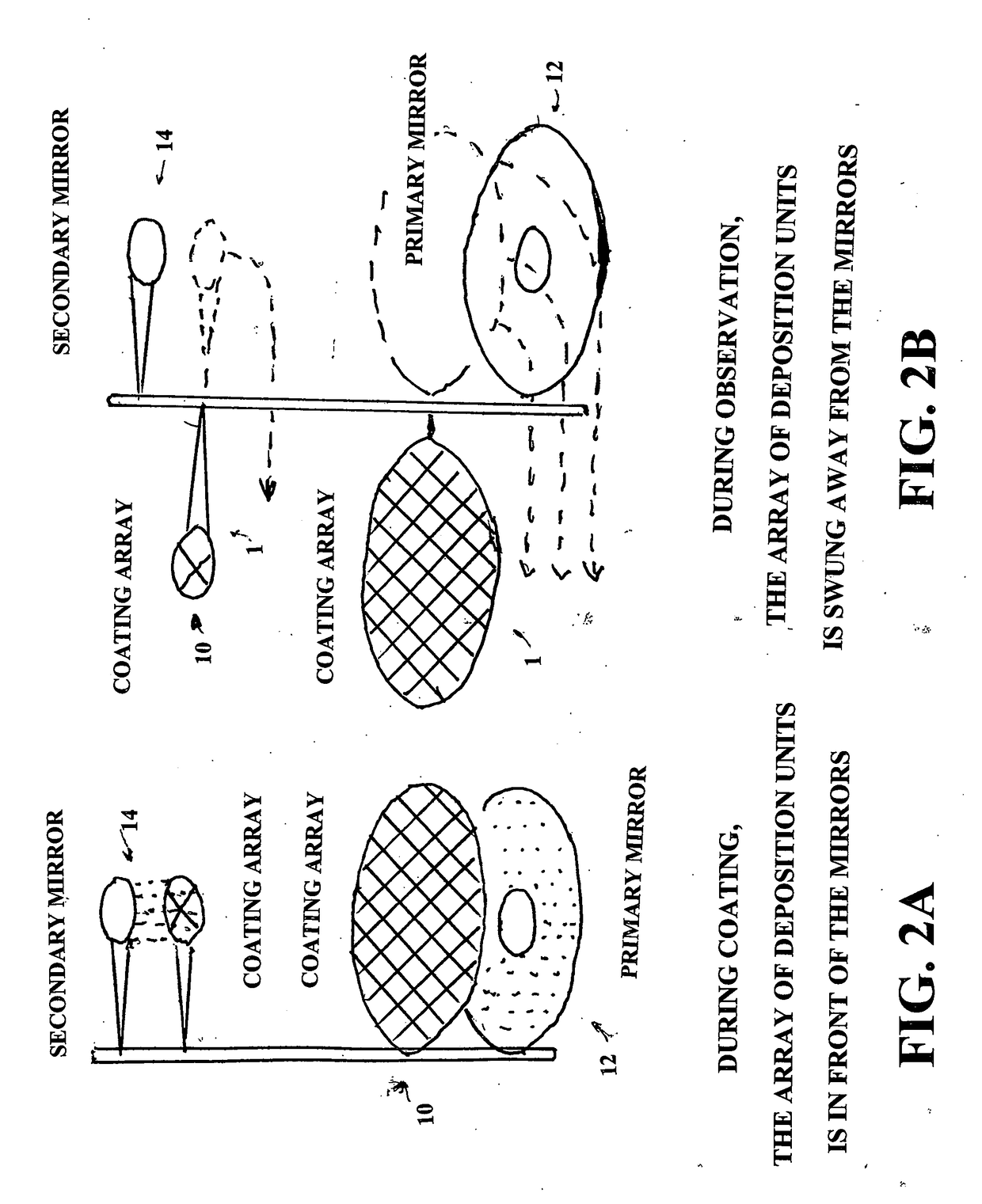Battery-Powered deposition system and process for making reflective coatings
- Summary
- Abstract
- Description
- Claims
- Application Information
AI Technical Summary
Benefits of technology
Problems solved by technology
Method used
Image
Examples
Embodiment Construction
[0071]FIG. 1 is a sketch of a single battery-powered deposition (BPD) unit. The unit 1 includes a filament 2 and circuit board 4 and two batteries 6 both contained in leak-proof tube 8. FIGS. 2A and 2B show individual BPD units 1 arranged in a hexagonal pattern 10 In these two drawings, a Cassegrain-Telescope with a primary mirror 12 and a secondary mirror 14 integrated with the battery-powered coating system. In this integration concept, a disc-shaped array of evaporators swings in front of the mirror for coating, and then swings out of the way for observations as shown in FIGS. 2A and 2B. More complicated telescopes with additional small mirror bounces and gratings can be accommodated with single BPD units, which also swing in front of their optics. The optical design of the system must, of course, provide physical space for these devices and motions.
[0072]As describe in detail below with embodiments of the present invention mirrors can be coated in space with important advantages...
PUM
| Property | Measurement | Unit |
|---|---|---|
| Diameter | aaaaa | aaaaa |
| Diameter | aaaaa | aaaaa |
| Length | aaaaa | aaaaa |
Abstract
Description
Claims
Application Information
 Login to View More
Login to View More - R&D
- Intellectual Property
- Life Sciences
- Materials
- Tech Scout
- Unparalleled Data Quality
- Higher Quality Content
- 60% Fewer Hallucinations
Browse by: Latest US Patents, China's latest patents, Technical Efficacy Thesaurus, Application Domain, Technology Topic, Popular Technical Reports.
© 2025 PatSnap. All rights reserved.Legal|Privacy policy|Modern Slavery Act Transparency Statement|Sitemap|About US| Contact US: help@patsnap.com



